Disaster Drills - The Importance of Practicing Safety
Disaster drills are not just a mundane task on a checklist; they are a vital part of ensuring our safety during emergencies. Imagine being in a situation where chaos reigns, and every second counts. Wouldn't you want to know exactly what to do? That's where disaster drills come into play. They prepare us for the unexpected, equipping us with the knowledge and skills to react swiftly and effectively. By practicing these drills regularly, we can transform fear into confidence, panic into preparedness, and uncertainty into action.
The significance of disaster drills extends far beyond merely following regulations or policies. They serve as a rehearsal for real-life situations that can be life-threatening. When the alarm sounds, whether it’s for a fire, an earthquake, or any other emergency, the instinct to flee or take cover can lead to confusion. However, with regular drills, individuals become familiar with their surroundings, know the evacuation routes, and understand their roles. This familiarity is crucial, as it can significantly reduce the level of panic experienced during an actual emergency.
Moreover, disaster drills foster a culture of safety within communities and organizations. When individuals participate in drills, they not only learn personal safety techniques but also develop a sense of responsibility towards others. They learn to look out for their colleagues, friends, and family members, creating a network of support that can be invaluable in times of crisis. This collective preparedness can be the difference between chaos and order when disaster strikes.
In addition to enhancing individual readiness, disaster drills also highlight the importance of teamwork. During these exercises, participants must communicate effectively, coordinate their actions, and support one another. This collaboration builds trust and strengthens relationships, which are essential in high-stress situations. Just like a well-oiled machine, every member plays a critical role in ensuring the safety of the whole group. The more we practice together, the more instinctive our responses become, leading to a smoother and more efficient response during actual emergencies.
So, why should we prioritize disaster drills? The answer is simple: because our safety depends on it. By investing time and effort into these practices, we are not just checking a box; we are actively contributing to a safer environment for ourselves and those around us. The knowledge gained from these drills can save lives, and that is a powerful motivator to engage fully in the process.
- What are disaster drills?
Disaster drills are practice exercises designed to prepare individuals and organizations for emergencies, ensuring they know their roles and responsibilities in a crisis.
- Why are disaster drills important?
They help reduce panic, improve response times, and build confidence and teamwork among participants, ultimately enhancing overall safety.
- How often should disaster drills be conducted?
It is recommended to conduct disaster drills at least twice a year to keep everyone familiar with procedures and to update any necessary information.
- What types of disasters should be practiced?
Common types include fire, earthquake, active shooter, and severe weather drills, each tailored to specific scenarios.
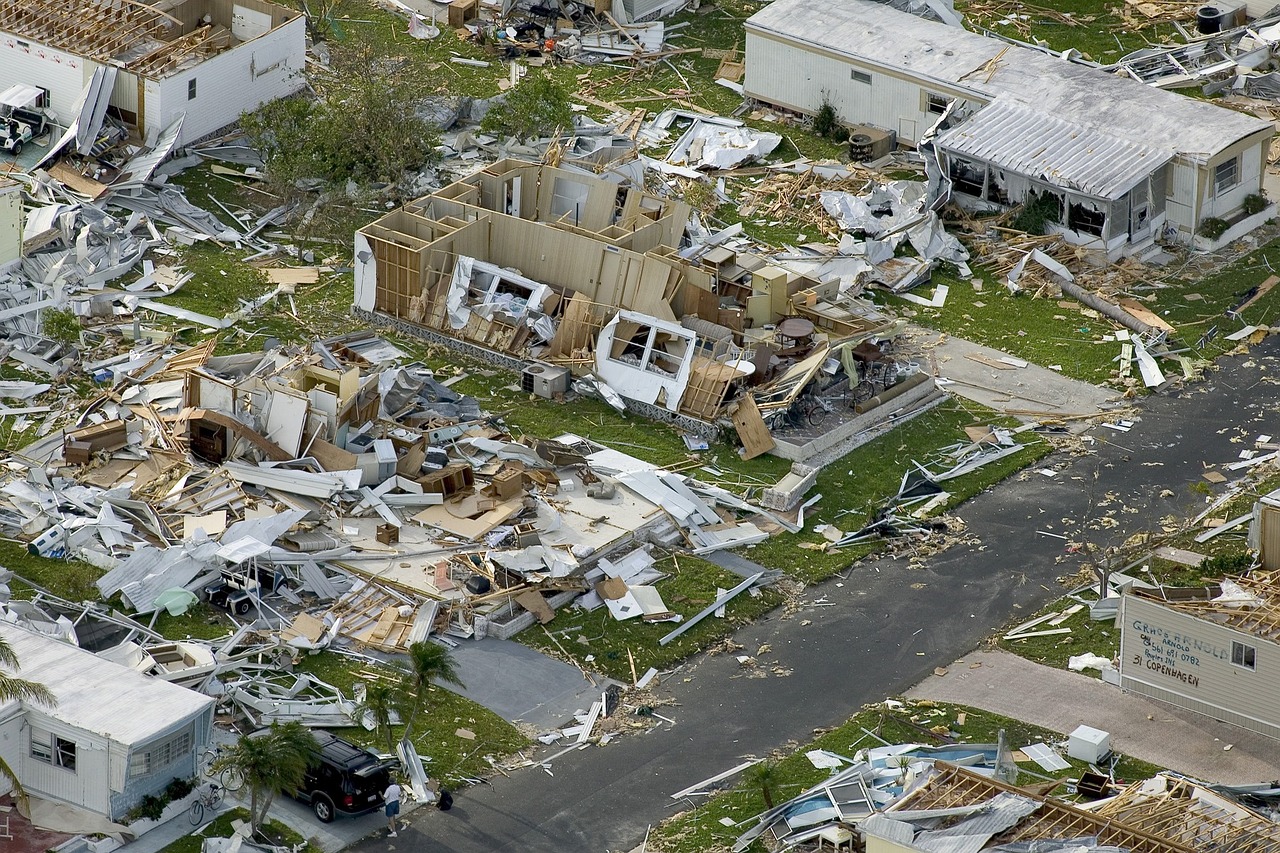
The Purpose of Disaster Drills
Disaster drills are not just a mundane routine; they are a lifeline that prepares individuals and organizations for the unexpected. Imagine being in a situation where every second counts, and the chaos of an emergency could easily lead to panic. This is where the significance of disaster drills comes into play. They serve a fundamental purpose: to ensure that everyone knows their roles and responsibilities when disaster strikes. By practicing these scenarios, participants can significantly reduce panic and improve their response times during actual emergencies.
Think of disaster drills as a rehearsal for a play. Just as actors need to know their lines and cues to perform seamlessly, individuals in a community must be aware of their emergency protocols. This preparation not only builds familiarity but also instills a sense of confidence. When people are well-prepared, they are less likely to freeze in fear when faced with a crisis. Instead, they can act swiftly and decisively, which can ultimately save lives.
Furthermore, disaster drills offer a unique opportunity for organizations to evaluate their emergency plans. They can identify potential weaknesses in their response strategies and make necessary adjustments before a real crisis occurs. This proactive approach can be the difference between chaos and order when an actual emergency unfolds. For instance, a fire drill might reveal that certain evacuation routes are blocked or that communication systems need improvement. By addressing these issues during practice, organizations can enhance their overall safety measures.
In addition to improving individual readiness, disaster drills also foster teamwork and collaboration. During these exercises, participants learn to communicate effectively and work together under pressure. This camaraderie is crucial, as emergencies often require a collective effort to manage the situation. When individuals practice alongside their colleagues, they build trust and understanding, which can lead to more effective responses during real-life emergencies.
In summary, the purpose of disaster drills extends beyond mere compliance with safety regulations. They are essential for instilling confidence, enhancing teamwork, and refining emergency plans. By investing time and resources into regular drills, communities can create a culture of preparedness that not only protects individuals but also strengthens the fabric of society as a whole. So, are you ready to embrace the importance of disaster drills and take that crucial step toward ensuring safety for yourself and others?

Types of Disaster Drills
This article explores the significance of disaster drills, emphasizing their role in preparedness, response, and recovery during emergencies. Understanding their benefits can enhance safety measures for individuals and communities alike.
Disaster drills serve to prepare individuals and organizations for emergencies, ensuring that everyone knows their roles and responsibilities. This preparation can significantly reduce panic and improve response times during actual disasters.
When we talk about disaster drills, it's essential to recognize that they aren't all the same. Different situations require different responses, and that's where the variety of disaster drills comes into play. Each type is designed to address specific scenarios, allowing participants to practice tailored responses and increase their readiness for real-life situations. Here’s a closer look at some of the most common types:
Fire drills are crucial for teaching evacuation procedures and ensuring that everyone knows the quickest exits. Imagine being in a building filled with smoke; knowing where to go can be the difference between safety and disaster. Regular practice can help reduce injuries and fatalities during actual fire emergencies.
Understanding designated evacuation routes is vital for safe exits during a fire. Practicing these routes helps familiarize participants with the safest and quickest ways to leave the building. The more you practice, the more instinctive these routes become, allowing for a smoother evacuation.
Fire wardens play a critical role in managing evacuations. Training them to guide others effectively ensures that everyone is accounted for and safely evacuated during a fire emergency. It’s like having a captain on a ship; without them, chaos can ensue. Their leadership can make all the difference in a crisis.
Earthquake drills focus on teaching individuals how to protect themselves during seismic events. Participants learn to drop, cover, and hold on, which can minimize injuries during an actual earthquake. Think of it as a dance you need to master; the more you practice, the better you get at it. These drills can instill a sense of preparedness that is invaluable when the ground starts shaking.
Active shooter drills are designed to prepare individuals for the unthinkable. They teach participants how to respond quickly and effectively in a situation where their safety is at risk. This type of drill often involves realistic scenarios and emphasizes the importance of situational awareness and decision-making under pressure. The goal is to create a mental framework that can help save lives.
In addition to these, there are many other types of disaster drills, including those for natural disasters like hurricanes and floods, as well as medical emergencies. Each type of drill provides unique insights and prepares participants for specific challenges they may face.
Regularly practicing disaster drills enhances preparedness, builds confidence, and fosters teamwork. These benefits contribute to a more resilient community capable of effectively responding to emergencies.
Participating in drills helps individuals feel more confident in their ability to respond during emergencies. This confidence can reduce anxiety and promote quick decision-making when faced with real disaster scenarios.
Disaster drills foster teamwork as participants learn to communicate and collaborate under pressure. This improved coordination can lead to more effective responses during actual emergencies.
Implementing disaster drills can pose challenges, such as time constraints and participant engagement. Addressing these challenges is essential for ensuring effective training and preparedness.
Finding time for drills can be difficult in busy schedules. Organizations must prioritize these practices to ensure that everyone is adequately prepared for emergencies.
Keeping participants engaged during drills is crucial for effective learning. Using interactive methods and realistic scenarios can enhance involvement and retention of critical safety information.
- Why are disaster drills important? Disaster drills prepare individuals for emergencies, ensuring they know how to react quickly and safely.
- How often should disaster drills be conducted? It's recommended to conduct drills at least twice a year, but frequency can vary based on the organization and its specific needs.
- What should I do if I miss a drill? If you miss a drill, make sure to review the procedures and participate in the next scheduled drill to stay informed.
- Can disaster drills be fun? Absolutely! Incorporating engaging scenarios and teamwork can make drills enjoyable while still being educational.
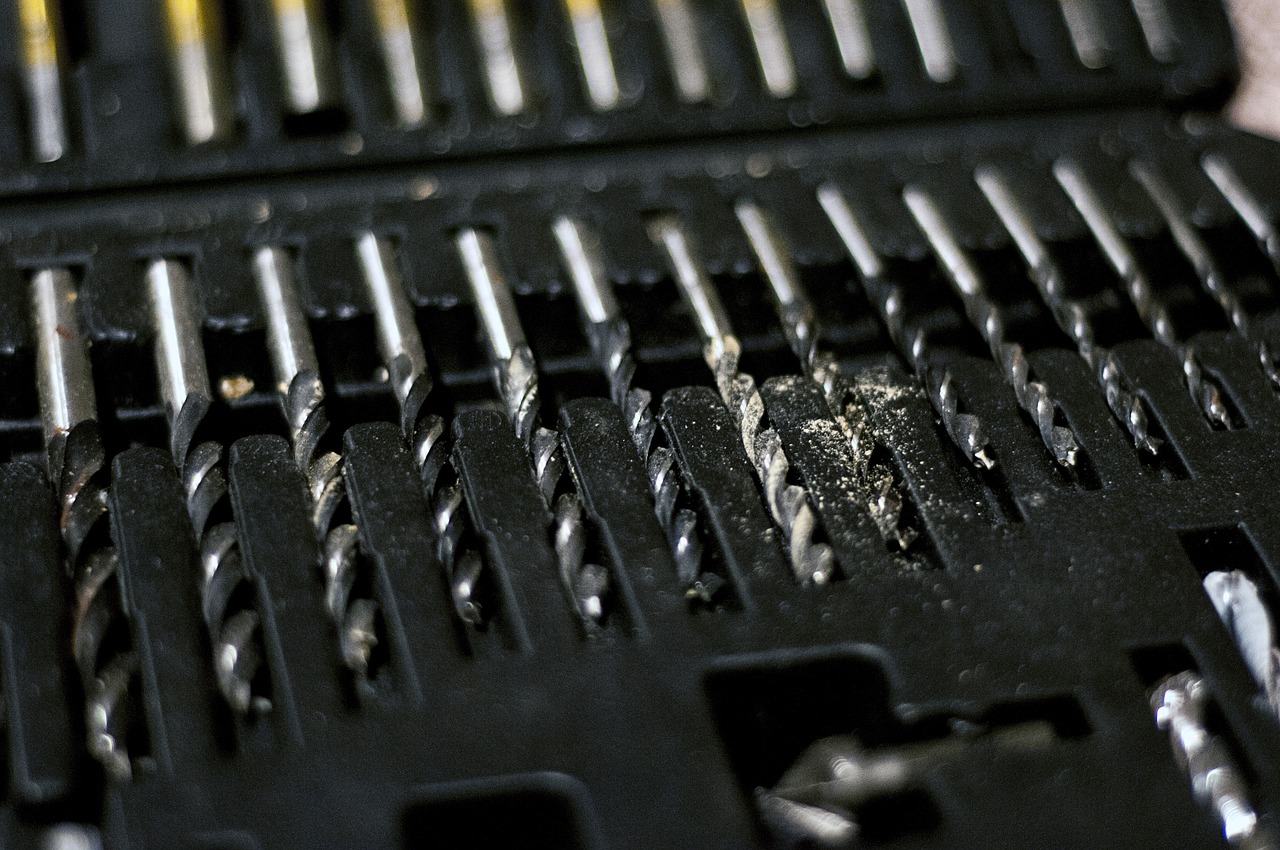
Fire Drills
This article explores the significance of disaster drills, emphasizing their role in preparedness, response, and recovery during emergencies. Understanding their benefits can enhance safety measures for individuals and communities alike.
Disaster drills serve to prepare individuals and organizations for emergencies, ensuring that everyone knows their roles and responsibilities. This preparation can significantly reduce panic and improve response times during actual disasters.
Various types of disaster drills exist, including fire, earthquake, and active shooter drills. Each type addresses specific scenarios, allowing participants to practice tailored responses and increase their readiness for real-life situations.
Fire drills are crucial for teaching evacuation procedures and ensuring that everyone knows the quickest exits. Regular practice can help reduce injuries and fatalities during actual fire emergencies. Imagine being in a crowded building when the fire alarm goes off. Panic can set in quickly, but if everyone has practiced their escape routes, the chaos can be minimized. Fire drills instill a sense of familiarity with the environment, which is vital when every second counts.
During a fire drill, participants learn the importance of designated evacuation routes. Understanding these routes is vital for safe exits during a fire. Practicing these routes helps familiarize participants with the safest and quickest ways to leave the building. For instance, if a fire breaks out on the second floor, knowing that the nearest exit is at the end of the hall can make all the difference. This knowledge not only aids in personal safety but also ensures that everyone can exit efficiently.
Evacuation routes should be clearly marked throughout the building. Regularly reviewing these routes during drills ensures that everyone is aware of their surroundings. It’s like learning the layout of a new city; the more you familiarize yourself with the streets, the easier it is to navigate when you need to. Additionally, organizations should consider posting evacuation maps in common areas to reinforce this knowledge.
Fire wardens play a critical role in managing evacuations. Training them to guide others effectively ensures that everyone is accounted for and safely evacuated during a fire emergency. Think of fire wardens as the captains of a ship during a storm; their leadership can steer everyone to safety. These individuals should be trained not only in evacuation procedures but also in how to communicate clearly and calmly under pressure. In the heat of the moment, having someone who can direct traffic and keep order can prevent further chaos.
Regularly practicing disaster drills enhances preparedness, builds confidence, and fosters teamwork. These benefits contribute to a more resilient community capable of effectively responding to emergencies.
Participating in drills helps individuals feel more confident in their ability to respond during emergencies. This confidence can reduce anxiety and promote quick decision-making when faced with real disaster scenarios.
Disaster drills foster teamwork as participants learn to communicate and collaborate under pressure. This improved coordination can lead to more effective responses during actual emergencies.
Implementing disaster drills can pose challenges, such as time constraints and participant engagement. Addressing these challenges is essential for ensuring effective training and preparedness.
Finding time for drills can be difficult in busy schedules. Organizations must prioritize these practices to ensure that everyone is adequately prepared for emergencies.
Keeping participants engaged during drills is crucial for effective learning. Using interactive methods and realistic scenarios can enhance involvement and retention of critical safety information.
- How often should fire drills be conducted? It's recommended to conduct fire drills at least twice a year to ensure everyone remains familiar with procedures.
- What should I do if I cannot participate in a drill? Inform your supervisor or the designated safety officer. They may provide alternative training or information.
- Are fire drills mandatory in workplaces? Yes, many local laws and regulations require regular fire drills to ensure safety compliance.

Evacuation Routes
This article explores the significance of disaster drills, emphasizing their role in preparedness, response, and recovery during emergencies. Understanding their benefits can enhance safety measures for individuals and communities alike.
Disaster drills serve to prepare individuals and organizations for emergencies, ensuring that everyone knows their roles and responsibilities. This preparation can significantly reduce panic and improve response times during actual disasters.
Various types of disaster drills exist, including fire, earthquake, and active shooter drills. Each type addresses specific scenarios, allowing participants to practice tailored responses and increase their readiness for real-life situations.
Fire drills are crucial for teaching evacuation procedures and ensuring that everyone knows the quickest exits. Regular practice can help reduce injuries and fatalities during actual fire emergencies.
Understanding designated evacuation routes is vital for safe exits during a fire. These routes are not just lines on a map; they represent the safest pathways to safety when every second counts. Practicing these routes helps familiarize participants with the safest and quickest ways to leave the building. Imagine being in a smoke-filled room; knowing exactly where to go can be the difference between safety and chaos.
To ensure everyone is well-prepared, organizations should clearly mark evacuation routes with visible signs and provide maps that highlight these paths. Regularly scheduled drills can reinforce the importance of these routes, making them second nature to all participants. Here’s a quick overview of what effective evacuation routes should include:
- Clear Signage: Signs should be posted at regular intervals, leading to exits.
- Unobstructed Paths: Ensure that evacuation routes are free from obstacles and hazards.
- Regular Updates: Any changes to the building layout or exits should be communicated promptly.
Moreover, it’s essential to practice evacuation routes under various scenarios. For instance, what if the main exit is blocked? Participants should be aware of alternative routes to ensure that they can evacuate effectively no matter the situation. This kind of preparation instills confidence and equips individuals with the knowledge they need to act decisively in emergencies.
Fire wardens play a critical role in managing evacuations. Training them to guide others effectively ensures that everyone is accounted for and safely evacuated during a fire emergency.
Earthquake drills focus on teaching individuals how to protect themselves during seismic events. Participants learn to drop, cover, and hold on, which can minimize injuries during an actual earthquake.
Regularly practicing disaster drills enhances preparedness, builds confidence, and fosters teamwork. These benefits contribute to a more resilient community capable of effectively responding to emergencies.
Participating in drills helps individuals feel more confident in their ability to respond during emergencies. This confidence can reduce anxiety and promote quick decision-making when faced with real disaster scenarios.
Disaster drills foster teamwork as participants learn to communicate and collaborate under pressure. This improved coordination can lead to more effective responses during actual emergencies.
Implementing disaster drills can pose challenges, such as time constraints and participant engagement. Addressing these challenges is essential for ensuring effective training and preparedness.
Finding time for drills can be difficult in busy schedules. Organizations must prioritize these practices to ensure that everyone is adequately prepared for emergencies.
Keeping participants engaged during drills is crucial for effective learning. Using interactive methods and realistic scenarios can enhance involvement and retention of critical safety information.
Q1: How often should disaster drills be conducted?
A: It's recommended to conduct drills at least twice a year to keep skills fresh and reinforce knowledge.
Q2: What should I do if I cannot participate in a drill?
A: If you can't attend, ensure to review the evacuation routes and procedures independently. Communication with your organization about your absence is also vital.
Q3: Are there specific drills for children?
A: Yes, drills for children should be tailored to their understanding and capabilities, often incorporating games to make learning fun.

Role of Fire Wardens
This article explores the significance of disaster drills, emphasizing their role in preparedness, response, and recovery during emergencies. Understanding their benefits can enhance safety measures for individuals and communities alike.
Disaster drills serve to prepare individuals and organizations for emergencies, ensuring that everyone knows their roles and responsibilities. This preparation can significantly reduce panic and improve response times during actual disasters.
Various types of disaster drills exist, including fire, earthquake, and active shooter drills. Each type addresses specific scenarios, allowing participants to practice tailored responses and increase their readiness for real-life situations.
Fire drills are crucial for teaching evacuation procedures and ensuring that everyone knows the quickest exits. Regular practice can help reduce injuries and fatalities during actual fire emergencies.
Understanding designated evacuation routes is vital for safe exits during a fire. Practicing these routes helps familiarize participants with the safest and quickest ways to leave the building.
Fire wardens play a critical role in managing evacuations during a fire emergency. Their responsibilities extend beyond merely guiding people out; they are the linchpins in ensuring the safety of everyone in the building. When alarms sound, fire wardens are trained to assess the situation quickly, directing individuals to the safest evacuation routes while remaining calm under pressure. This leadership is essential in maintaining order and preventing chaos, which could lead to injuries or worse.
Moreover, fire wardens are equipped with knowledge about the building's layout, including:
- Identifying all exits and emergency equipment
- Understanding the location of individuals with disabilities who may need assistance
- Ensuring that everyone is accounted for once outside
In addition to their immediate responsibilities during an evacuation, fire wardens also play a vital role in training and education. They often lead fire safety training sessions, where they teach employees about:
- The importance of fire drills
- How to use fire extinguishers
- Recognizing fire hazards
By fostering a culture of safety and preparedness, fire wardens help create an environment where everyone feels empowered to act swiftly and appropriately in emergencies. Their presence can significantly reduce response times and enhance the overall safety of the workplace.
Earthquake drills focus on teaching individuals how to protect themselves during seismic events. Participants learn to drop, cover, and hold on, which can minimize injuries during an actual earthquake.
Regularly practicing disaster drills enhances preparedness, builds confidence, and fosters teamwork. These benefits contribute to a more resilient community capable of effectively responding to emergencies.
Participating in drills helps individuals feel more confident in their ability to respond during emergencies. This confidence can reduce anxiety and promote quick decision-making when faced with real disaster scenarios.
Disaster drills foster teamwork as participants learn to communicate and collaborate under pressure. This improved coordination can lead to more effective responses during actual emergencies.
Implementing disaster drills can pose challenges, such as time constraints and participant engagement. Addressing these challenges is essential for ensuring effective training and preparedness.
Finding time for drills can be difficult in busy schedules. Organizations must prioritize these practices to ensure that everyone is adequately prepared for emergencies.
Keeping participants engaged during drills is crucial for effective learning. Using interactive methods and realistic scenarios can enhance involvement and retention of critical safety information.
Q: How often should disaster drills be conducted?
A: It's recommended to conduct disaster drills at least twice a year to ensure everyone remains familiar with procedures.
Q: What should I do if I am unable to participate in a drill?
A: If you cannot participate, communicate with your fire warden or safety officer to ensure you receive the necessary training and information afterward.
Q: Are there specific regulations regarding disaster drills?
A: Yes, many organizations are required to follow local regulations and guidelines that outline the frequency and type of drills needed based on the nature of their operations.

Earthquake Drills
Earthquake drills are essential for teaching individuals how to protect themselves during one of nature's most unpredictable events. Imagine you're sitting at your desk, and suddenly the ground starts shaking—what do you do? Panic can set in, but with proper training through earthquake drills, you can learn to stay calm and react swiftly. These drills emphasize a simple yet crucial technique: drop, cover, and hold on. This method helps minimize injuries during an actual earthquake. By practicing this technique, participants become familiar with the safest actions to take when the ground begins to tremble.
During an earthquake drill, participants are typically instructed to:
- Drop to your hands and knees to prevent being knocked over.
- Cover your head and neck under a sturdy piece of furniture, like a table or desk.
- Hold on until the shaking stops, maintaining your position to protect yourself.
In addition to these actions, earthquake drills also focus on understanding the environment. Participants learn to identify safe spots in their homes, schools, or workplaces where they can take cover. This knowledge is vital because, in the chaos of an actual earthquake, knowing the safest areas can make a significant difference. For instance, avoiding windows and heavy furniture that might topple over can prevent serious injuries.
Furthermore, the drills often incorporate realistic scenarios that simulate the conditions of an actual earthquake. This immersive experience not only helps participants practice their responses but also builds their confidence. When individuals know what to expect, they are less likely to panic and more likely to act decisively, which is crucial during an emergency.
To make the drills even more effective, organizations can implement a few strategies:
- Conduct regular drills to reinforce learning and keep safety procedures fresh in everyone's mind.
- Involve local emergency services to provide expert insights and enhance the realism of the drills.
- Encourage feedback from participants to continually improve the training process.
In summary, earthquake drills are not just about practicing a few steps; they are about instilling a mindset of preparedness and resilience. The more familiar individuals become with the appropriate responses, the better equipped they will be to handle the unexpected. So, the next time you hear about an upcoming earthquake drill, remember that it's not just a routine exercise—it's a vital opportunity to ensure your safety and the safety of those around you.
Q: How often should earthquake drills be conducted?
A: It's recommended to conduct earthquake drills at least twice a year to keep safety procedures fresh and effective.
Q: What should I do if I am outside during an earthquake?
A: If you are outside, move to an open area away from buildings, trees, and utility wires. Stay there until the shaking stops.
Q: Can children participate in earthquake drills?
A: Absolutely! Children should be included in earthquake drills to ensure they know how to respond in case of an emergency.
Q: What are some common mistakes people make during earthquake drills?
A: Some common mistakes include standing in doorways, running outside, or not taking the drill seriously. It's important to follow the correct procedures for safety.
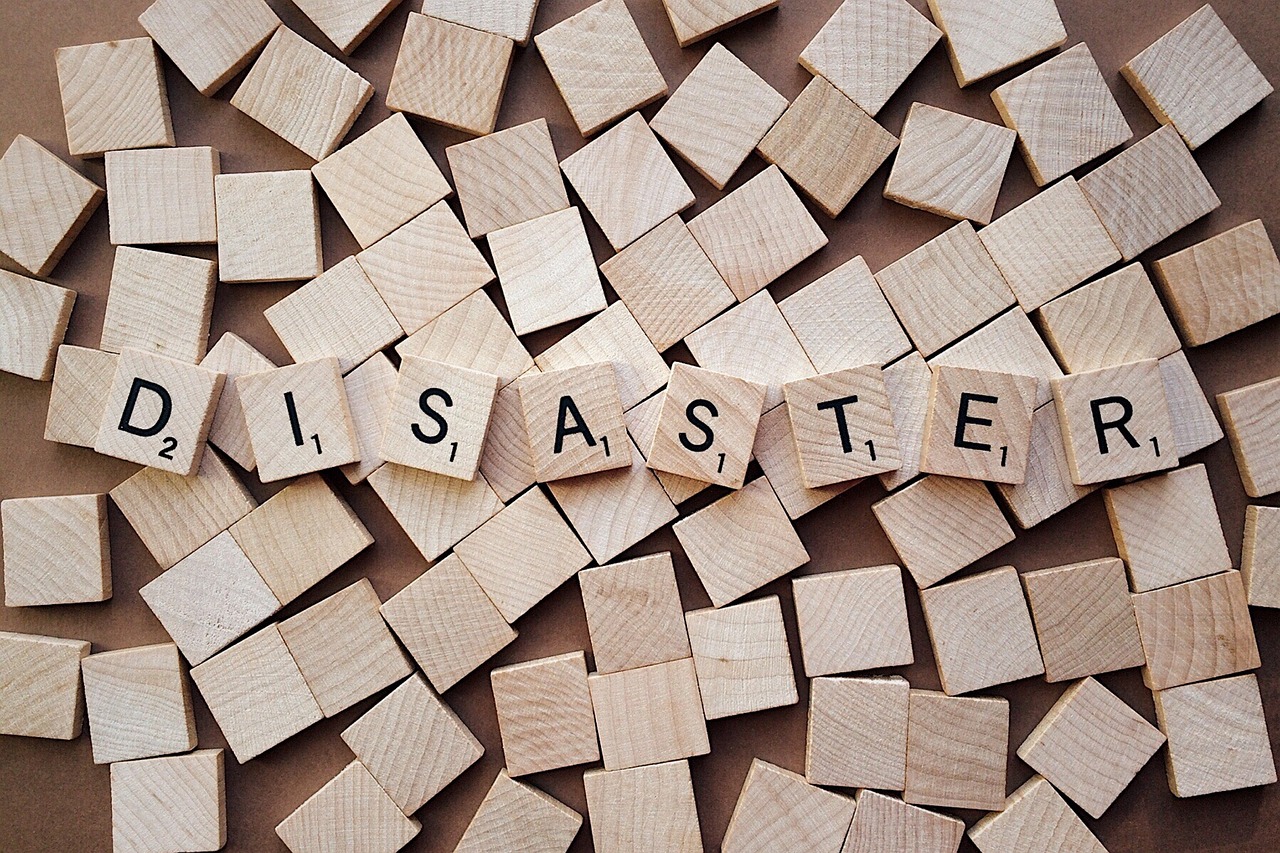
Benefits of Regular Practice
Regularly practicing disaster drills offers a multitude of benefits that go beyond just knowing what to do in an emergency. One of the most significant advantages is the enhancement of overall preparedness. When individuals participate in drills, they become familiar with the procedures and protocols that need to be followed during an emergency. This familiarity breeds confidence, which is crucial when seconds count. Imagine being in a chaotic situation; having practiced can mean the difference between panic and a calm, collected response.
Furthermore, regular practice builds a sense of community and teamwork among participants. When people engage in drills together, they learn to communicate and rely on one another. This camaraderie can be vital during actual emergencies, as cohesive teams can respond more effectively. For example, during a fire drill, participants may discover who among them is best suited to help others evacuate, fostering a natural leadership dynamic that can be utilized in real situations.
Another important aspect of regular practice is the opportunity for feedback and improvement. After each drill, participants can discuss what went well and what could be improved. This reflective process not only enhances individual skills but also strengthens the overall emergency response plan. By continuously refining these practices, organizations can ensure that they are always prepared for the unexpected.
Moreover, practicing disaster drills can significantly reduce anxiety. When people know what to expect and have rehearsed their roles, they are less likely to feel overwhelmed by fear during an actual emergency. This psychological preparedness can lead to quicker decision-making and a more effective response. Just like a sports team that practices regularly, individuals who drill are more likely to perform well under pressure.
In summary, the benefits of regular practice in disaster drills encompass:
- Enhanced preparedness through familiarity with procedures.
- Building confidence that reduces anxiety and promotes swift action.
- Fostering teamwork that leads to effective communication and collaboration.
- Opportunities for feedback that allow for continuous improvement.
These benefits not only help individuals but also contribute to the resilience of entire communities. When everyone is prepared, the collective response to emergencies becomes stronger, ultimately saving lives and reducing injuries.
Q1: How often should disaster drills be conducted?
A1: It is recommended that disaster drills be conducted at least twice a year, but more frequent drills can further enhance preparedness and confidence.
Q2: What should be included in a disaster drill?
A2: A disaster drill should include clear instructions, designated roles for participants, a realistic scenario, and a debriefing session to discuss what went well and what can be improved.
Q3: How can organizations keep participants engaged during drills?
A3: Organizations can keep participants engaged by incorporating interactive methods, using realistic scenarios, and providing incentives for participation.
Q4: What are the key roles in a fire drill?
A4: Key roles in a fire drill include fire wardens, who guide evacuations, and participants who follow the established evacuation routes and procedures.
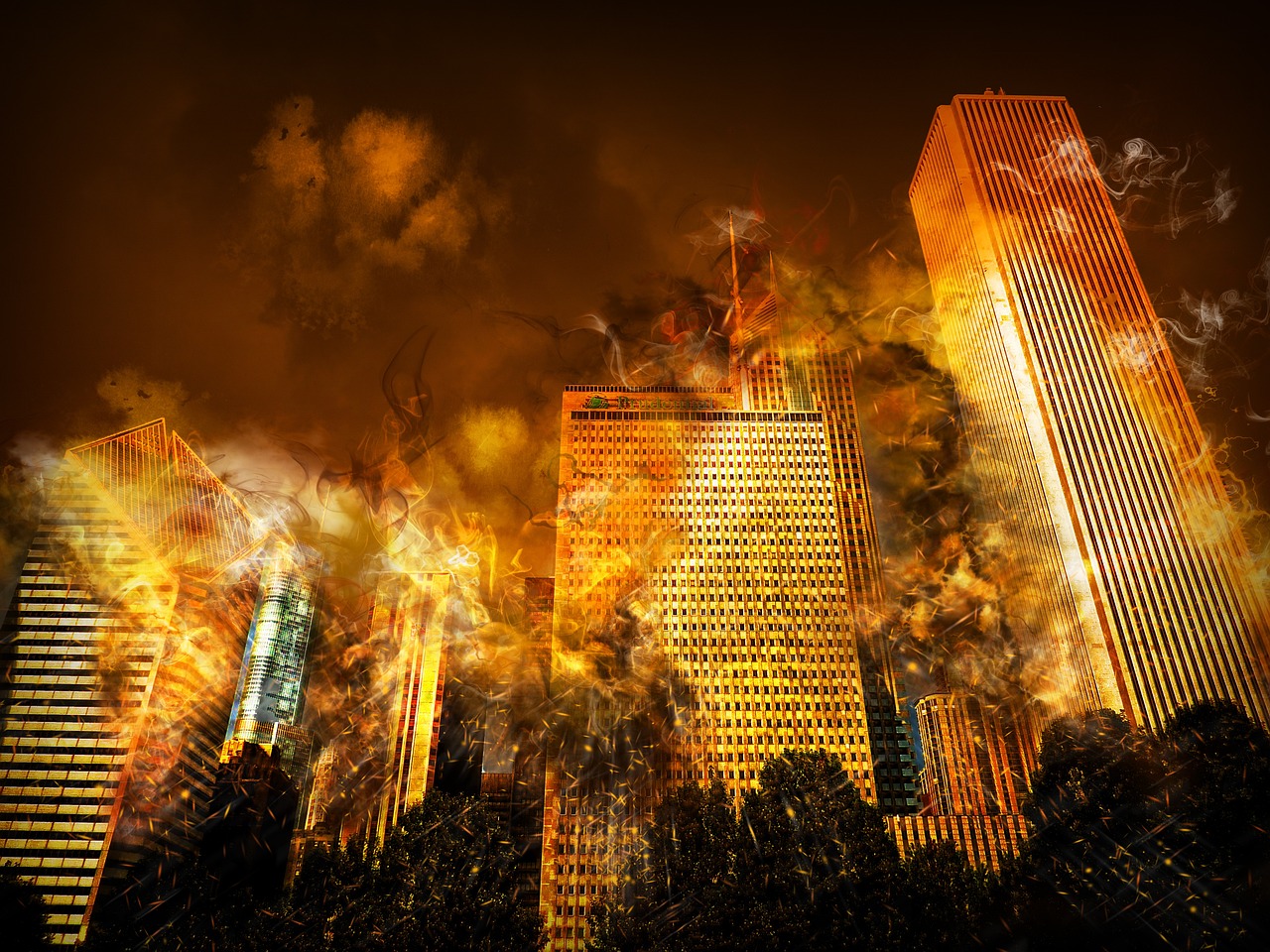
Building Confidence
Participating in disaster drills is like training for a marathon; the more you practice, the more confident you become in your abilities. When individuals engage in realistic simulations, they not only learn the necessary skills but also cultivate a sense of assurance in their capacity to handle emergencies. This confidence is crucial because, during a real disaster, panic can easily set in, leading to poor decision-making. By regularly practicing drills, participants can experience the adrenaline and stress of an emergency in a controlled environment, allowing them to develop effective coping strategies.
Moreover, confidence gained through drills can significantly reduce anxiety. Imagine standing in the middle of a chaotic situation, unsure of what to do—that's a recipe for disaster. However, when individuals have gone through drills multiple times, they are likely to remember their training and respond more calmly and decisively. This mental preparedness can be the difference between chaos and order in a real emergency.
It's also important to note that confidence is contagious. When one person demonstrates calmness and control, it can inspire others to do the same. This collective confidence can enhance overall group dynamics during emergencies. For instance, if a team leader remains composed, it encourages team members to follow suit, creating a ripple effect of assurance throughout the group.
In addition to personal confidence, disaster drills also foster a supportive environment where individuals can learn from each other. Participants can share experiences and strategies, which not only enhances their individual skill sets but also builds a stronger, more cohesive team. This collaboration is essential because emergencies often require collective action. When everyone is on the same page, the likelihood of a successful response increases.
To sum up, building confidence through disaster drills is not just about learning procedures; it’s about fostering a mindset that embraces preparedness. This mindset can empower individuals and communities alike, transforming fear into action. In a world where emergencies can strike at any moment, having the confidence to act decisively can save lives.
- What are disaster drills?
Disaster drills are practice sessions designed to prepare individuals and organizations for emergencies, allowing participants to learn their roles and responsibilities in a controlled environment. - How often should disaster drills be conducted?
It is recommended that disaster drills be conducted at least twice a year, but more frequent practice can enhance preparedness and confidence. - What types of emergencies should be included in drills?
Drills should cover various scenarios such as fires, earthquakes, active shooter situations, and other emergencies relevant to the specific environment. - Are disaster drills only for organizations?
No, individuals and families can also benefit from practicing disaster drills at home to ensure everyone knows what to do in an emergency.
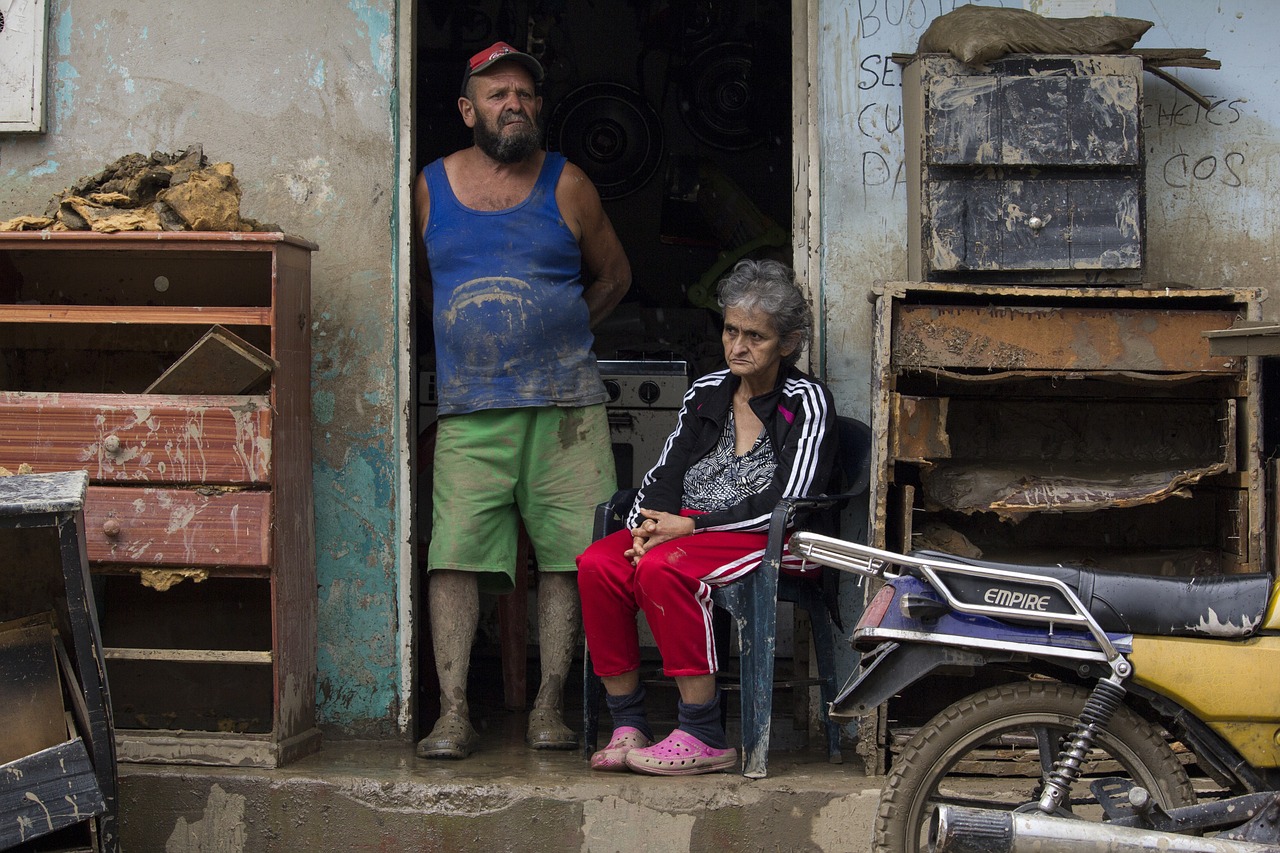
Enhancing Teamwork
This article explores the significance of disaster drills, emphasizing their role in preparedness, response, and recovery during emergencies. Understanding their benefits can enhance safety measures for individuals and communities alike.
Disaster drills serve to prepare individuals and organizations for emergencies, ensuring that everyone knows their roles and responsibilities. This preparation can significantly reduce panic and improve response times during actual disasters.
Various types of disaster drills exist, including fire, earthquake, and active shooter drills. Each type addresses specific scenarios, allowing participants to practice tailored responses and increase their readiness for real-life situations.
Fire drills are crucial for teaching evacuation procedures and ensuring that everyone knows the quickest exits. Regular practice can help reduce injuries and fatalities during actual fire emergencies.
Understanding designated evacuation routes is vital for safe exits during a fire. Practicing these routes helps familiarize participants with the safest and quickest ways to leave the building.
Fire wardens play a critical role in managing evacuations. Training them to guide others effectively ensures that everyone is accounted for and safely evacuated during a fire emergency.
Earthquake drills focus on teaching individuals how to protect themselves during seismic events. Participants learn to drop, cover, and hold on, which can minimize injuries during an actual earthquake.
Regularly practicing disaster drills enhances preparedness, builds confidence, and fosters teamwork. These benefits contribute to a more resilient community capable of effectively responding to emergencies.
Participating in drills helps individuals feel more confident in their ability to respond during emergencies. This confidence can reduce anxiety and promote quick decision-making when faced with real disaster scenarios.
Disaster drills are not just about individual preparedness; they are also a fantastic opportunity to enhance teamwork among participants. When people come together to practice their responses, they learn to rely on one another, which is essential during high-pressure situations. Imagine a well-orchestrated dance where each member knows their part, moving in harmony to achieve a common goal – that’s what effective teamwork during a disaster drill looks like.
During these drills, participants often find themselves in scenarios that require clear communication and collaboration. For instance, when an alarm goes off, individuals must quickly share information about exits, assist those who may need help, and ensure that everyone is accounted for. This shared responsibility creates a sense of camaraderie and trust that can be invaluable during an actual emergency.
Moreover, teams that practice together tend to develop a deeper understanding of each other's strengths and weaknesses. This knowledge allows them to allocate tasks effectively, ensuring that everyone plays to their strengths. For example, some participants may excel in leadership roles, while others might be more adept at logistical tasks. Recognizing these differences can enhance the overall response during a crisis.
Incorporating team-building exercises into disaster drills can further strengthen these bonds. Activities that require participants to solve problems together or navigate challenges can simulate the kind of critical thinking needed in real emergencies. Ultimately, the goal is to create a cohesive unit that can act swiftly and efficiently when it matters most.
Implementing disaster drills can pose challenges, such as time constraints and participant engagement. Addressing these challenges is essential for ensuring effective training and preparedness.
Finding time for drills can be difficult in busy schedules. Organizations must prioritize these practices to ensure that everyone is adequately prepared for emergencies.
Keeping participants engaged during drills is crucial for effective learning. Using interactive methods and realistic scenarios can enhance involvement and retention of critical safety information.
- Why are disaster drills important? Disaster drills help prepare individuals and organizations for emergencies, reducing panic and improving response times.
- How often should disaster drills be conducted? Regular drills, at least once or twice a year, are recommended to keep skills fresh and ensure readiness.
- What types of disaster drills should be practiced? Common drills include fire, earthquake, and active shooter drills, tailored to specific risks in your area.
- How can I make drills more engaging? Use realistic scenarios, interactive methods, and team-building exercises to keep participants involved and motivated.
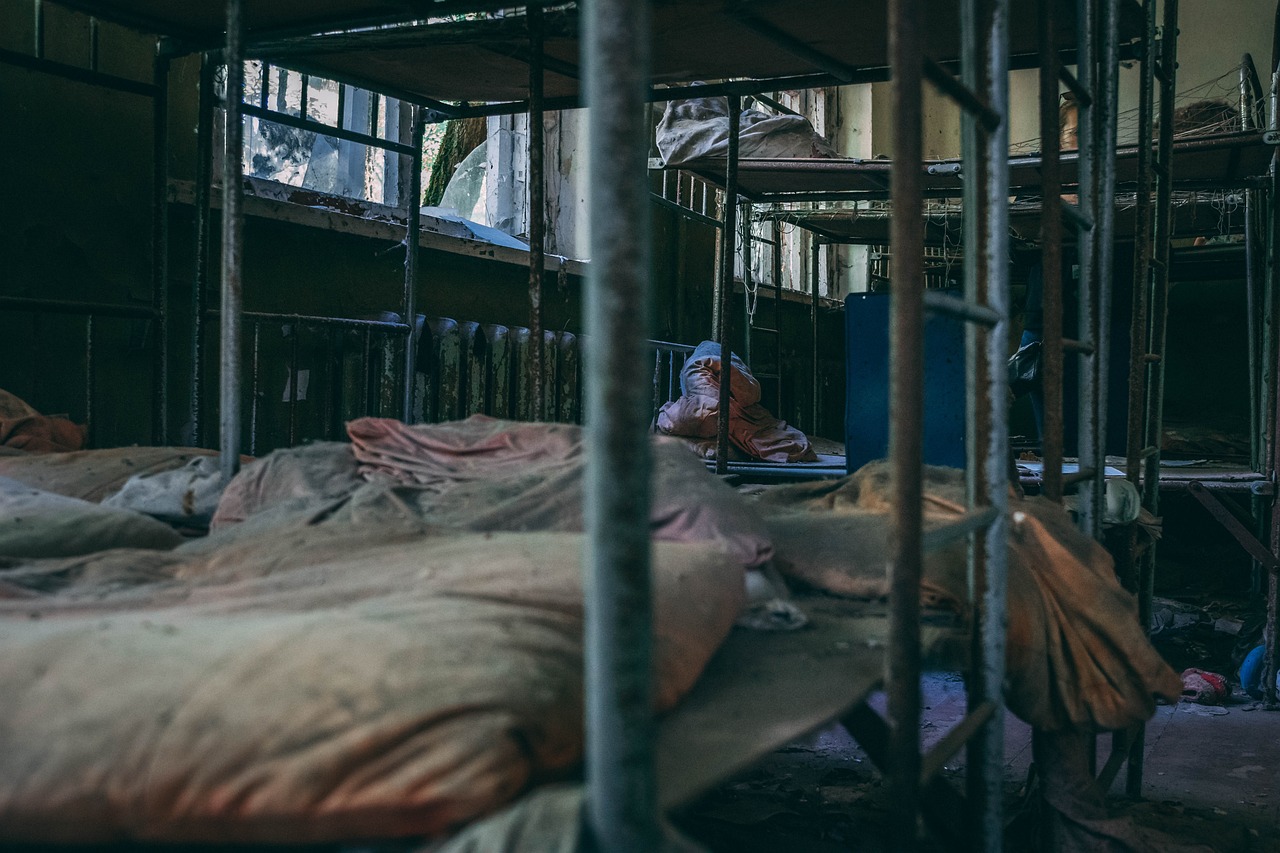
Challenges in Implementing Drills
Implementing disaster drills can sometimes feel like trying to herd cats; it’s not always easy! Organizations face several hurdles when trying to get everyone on board with these essential safety practices. One of the most significant challenges is time constraints. In today’s fast-paced world, finding a suitable time for drills can be tricky. Between meetings, deadlines, and day-to-day operations, it can seem impossible to carve out time for emergency preparedness. However, it's crucial to prioritize these drills, as they can be the difference between chaos and calm during an actual emergency.
Another challenge lies in engaging participants. Let's face it: not everyone gets excited about drills. If participants view them as a chore rather than a vital practice, the effectiveness of the training can diminish significantly. To combat this, organizations must find ways to make drills more engaging. Using interactive methods, such as role-playing or incorporating realistic scenarios, can help keep participants interested and invested in the learning process. When people are engaged, they’re more likely to remember the procedures and respond effectively when it counts.
Additionally, there’s often a knowledge gap regarding the importance of these drills. Some individuals may not understand why they are necessary or how they can benefit from participating. This lack of understanding can lead to apathy or resistance. Educating everyone about the potential risks and how drills can mitigate those risks is essential. When people realize that these exercises are designed not just to check a box but to genuinely prepare them for emergencies, they are more likely to participate actively.
Lastly, logistical issues can also pose a challenge. Coordinating schedules, securing locations, and ensuring that all necessary equipment is available can be daunting tasks. Organizations must plan well in advance and allocate resources efficiently to overcome these obstacles. A well-organized drill can lead to a smoother experience and better outcomes.
In summary, while there are challenges in implementing disaster drills, overcoming them is crucial for ensuring that individuals and organizations are prepared for emergencies. By prioritizing time for drills, engaging participants through interactive methods, educating everyone on the importance of these practices, and addressing logistical issues, organizations can create a culture of preparedness that benefits everyone.
- Why are disaster drills important? Disaster drills are essential as they prepare individuals and organizations for emergencies, helping to reduce panic and improve response times.
- How often should drills be conducted? It is recommended to conduct drills at least twice a year to ensure everyone remains familiar with procedures.
- What types of drills should be practiced? Various drills should be practiced, including fire, earthquake, and active shooter drills, to cover a range of potential emergencies.
- How can I make drills more engaging? Incorporating realistic scenarios, role-playing, and interactive methods can make drills more engaging and effective.
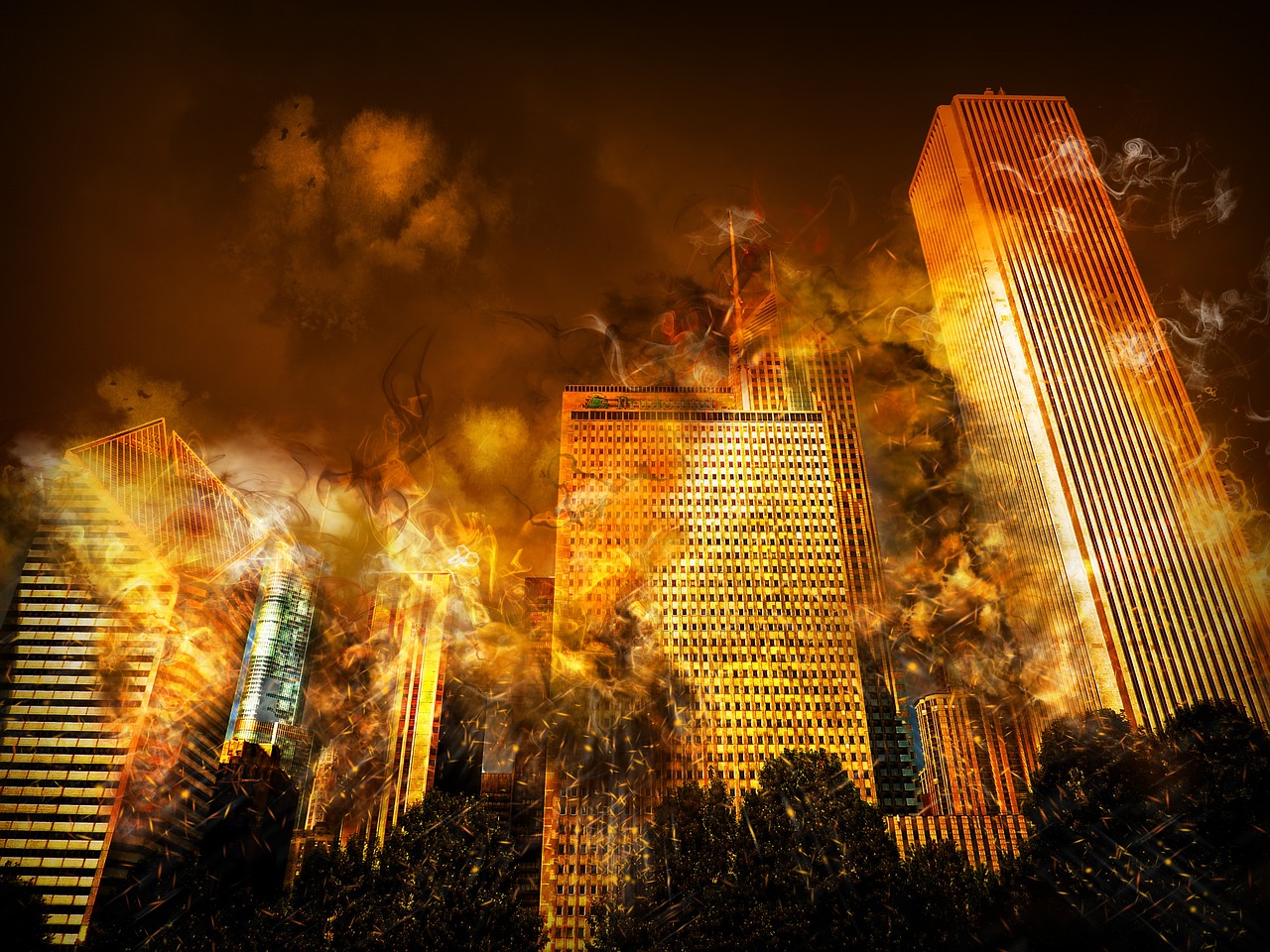
Time Constraints
Finding time for disaster drills can often feel like trying to catch smoke with your bare hands. In our fast-paced world, where every minute counts, organizations frequently struggle to carve out time for these essential practices. The reality is that busy schedules can easily push disaster preparedness to the back burner. However, neglecting this crucial training can lead to serious consequences when emergencies strike. It's like skipping your daily exercise; while it may seem harmless in the moment, the long-term effects can be detrimental.
To address these time constraints effectively, organizations need to prioritize disaster drills as a vital component of their operational strategy. This means integrating drills into regular training schedules, ensuring that they are not viewed as an inconvenience but rather as a necessary investment in safety. Here are some strategies that can help:
- Set a Regular Schedule: By establishing a routine for drills, such as quarterly fire drills or biannual earthquake preparedness sessions, organizations can ensure that these practices become a natural part of their operations.
- Utilize Shorter, More Frequent Drills: Instead of lengthy, exhaustive drills, consider implementing shorter, more frequent sessions that can fit into busy schedules without overwhelming participants.
- Incorporate Drills into Existing Meetings: Finding ways to integrate drills into regular staff meetings or training days can help maximize time efficiency and ensure everyone is involved.
Moreover, it's essential to communicate the importance of these drills to all participants. When individuals understand that these practices are not just bureaucratic red tape but life-saving exercises, they are more likely to prioritize their participation. It's about fostering a culture of safety where everyone recognizes their role in preparedness. Just like you wouldn't ignore a fire alarm, you shouldn't overlook the significance of practicing what to do when that alarm sounds.
In conclusion, while time constraints can pose a significant challenge to implementing disaster drills, they shouldn't be seen as insurmountable obstacles. By prioritizing preparedness, utilizing efficient scheduling strategies, and communicating the importance of these drills, organizations can ensure that everyone is ready to respond when emergencies arise. After all, in the face of disaster, being prepared can make all the difference between chaos and calm.
- Why are disaster drills important? Disaster drills are crucial for ensuring that individuals know how to respond in emergencies, reducing panic and improving response times.
- How often should disaster drills be conducted? Ideally, organizations should conduct disaster drills at least twice a year, with more frequent drills for high-risk scenarios.
- What should be included in a disaster drill? A disaster drill should include clear instructions, designated roles, and a review of evacuation routes and safety procedures.
- How can I make disaster drills more engaging? Incorporating interactive elements, realistic scenarios, and team-building exercises can enhance participant engagement during drills.

Engaging Participants
Engaging participants during disaster drills is not just a box to check; it’s a vital component that can make or break the effectiveness of the training. Imagine being in a real emergency situation—would you want to be surrounded by individuals who are disengaged and unsure of their roles? Of course not! To truly prepare for the unexpected, it’s essential to captivate the attention of everyone involved. One way to do this is by incorporating interactive elements into the drills. For instance, using realistic scenarios can create a sense of urgency and realism that encourages participants to take the exercise seriously.
Moreover, incorporating technology can significantly enhance engagement. For example, utilizing apps that simulate emergency situations or virtual reality experiences can make the training more immersive. These tools not only grab attention but also allow participants to practice their responses in a controlled environment where mistakes can be learned from without real-world consequences. Additionally, fostering an environment where participants feel comfortable asking questions and sharing their thoughts can lead to richer discussions and a deeper understanding of safety protocols.
Another effective strategy is to employ role-playing exercises. By assigning specific roles to participants—such as emergency responders, victims, or bystanders—you can create a dynamic learning environment. This approach allows everyone to experience various perspectives, increasing empathy and understanding of each role's importance during an actual emergency. Here’s a quick breakdown of how role-playing can enhance engagement:
| Role | Purpose |
|---|---|
| Emergency Responder | Learn how to assess situations quickly and make decisions under pressure. |
| Victim | Understand the importance of clear communication and following instructions. |
| Bystander | Recognize the role of bystanders in emergencies and how they can assist. |
Lastly, feedback plays a crucial role in maintaining participant engagement. After each drill, take the time to gather feedback through discussions or surveys. This not only shows participants that their opinions matter but also helps identify areas for improvement in future drills. When individuals see that their input leads to tangible changes, they are more likely to stay engaged and invested in the training process. Remember, the goal is to create a culture of safety where everyone feels empowered to act decisively in emergencies.
- Why are disaster drills important? Disaster drills prepare individuals and organizations for emergencies, helping to reduce panic and improve response times.
- How often should disaster drills be conducted? It's recommended to conduct disaster drills at least twice a year to ensure everyone remains familiar with procedures.
- What types of disasters should we prepare for? Organizations should consider various scenarios, including fires, earthquakes, active shooter situations, and natural disasters.
- How can we make drills more engaging? Incorporating realistic scenarios, technology, role-playing, and feedback can significantly enhance participant engagement.
Frequently Asked Questions
- Why are disaster drills important?
Disaster drills are essential because they prepare individuals and organizations for emergencies. By practicing responses, everyone knows their roles, which can significantly reduce panic and improve reaction times during actual disasters.
- What types of disaster drills are commonly practiced?
Common types of disaster drills include fire drills, earthquake drills, and active shooter drills. Each drill focuses on specific scenarios, allowing participants to practice tailored responses to enhance their readiness for real-life situations.
- How often should disaster drills be conducted?
It's recommended that disaster drills be conducted at least twice a year. Regular practice helps reinforce knowledge and skills, ensuring that everyone remains prepared and confident in their ability to respond during emergencies.
- What should I do if I miss a disaster drill?
If you miss a disaster drill, it's crucial to catch up on what was covered. Reach out to your organization or team leader for a debriefing, and make sure to participate in the next drill to stay informed and prepared.
- How can I engage participants during a drill?
Engaging participants can be achieved by using interactive methods, realistic scenarios, and even gamifying the experience. Incorporating hands-on activities and encouraging teamwork can significantly enhance involvement and retention of critical safety information.
- What role do fire wardens play in drills?
Fire wardens are crucial during drills as they manage evacuations. Their training ensures that they can effectively guide others, helping to account for everyone and ensuring a safe and orderly evacuation during fire emergencies.
- Can disaster drills reduce anxiety during real emergencies?
Absolutely! Participating in drills builds confidence, which in turn reduces anxiety. When individuals know what to do during an emergency, they are more likely to make quick and effective decisions when it truly matters.



















